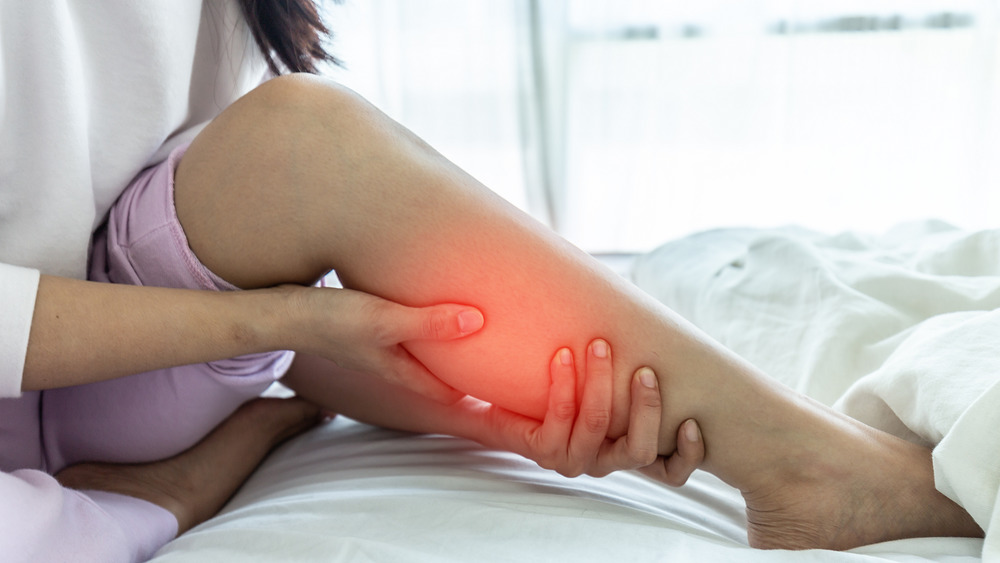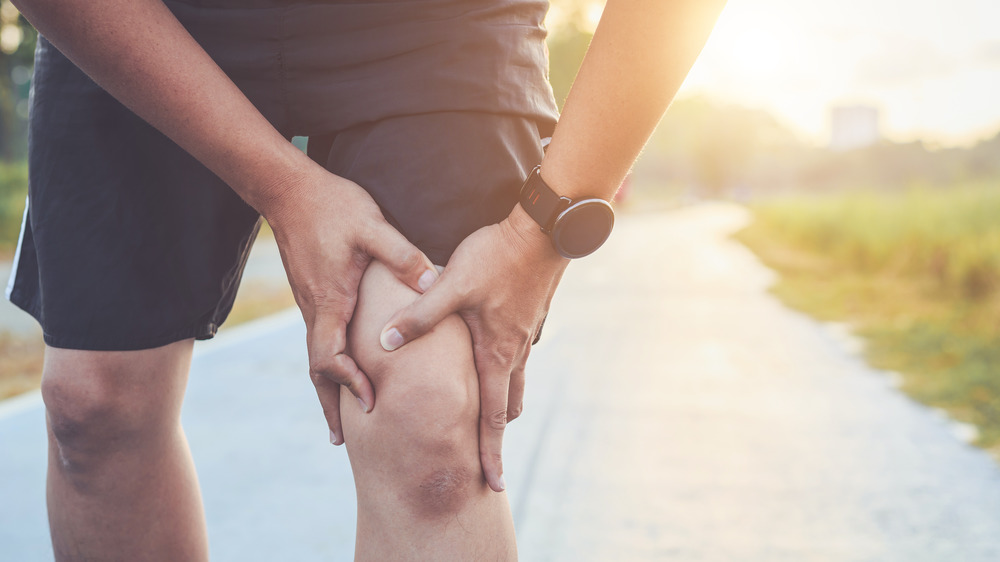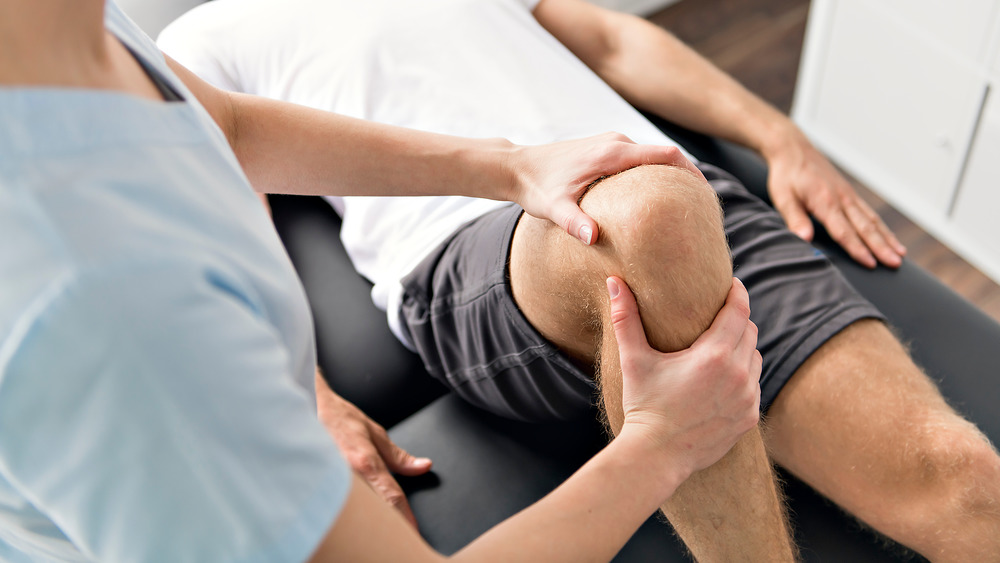What Are Dead Muscles?
A dead muscle is one that has been injured or underused and is no longer working correctly. If you play sports, you might get a dead muscle from a strike, usually to the thigh or quad muscle. Dead muscles can also result from a crushing injury, which can happen in an auto accident. You can also experience a dead muscle if you aren't getting enough nutrients in your diet, have cancer, or muscle disease, according to a 2015 abstract published in Advances in Experimental Medicine and Biology.
If this happens to you, you'll feel pain in the area, won't be able to move or use that muscle well, experience swelling, and later you may notice a bruise. The severity of the symptoms depends on the severity of the dead muscle. Dead muscle may also be called dead leg, dead butt, or chronic compartment syndrome (via Livestrong and Sports Injury Clinic).
Types of dead muscles
Dead leg is a common injury also called a thigh contusion, charley horse, or cork thigh. A physiotherapist will give the injury a grade of 1, 2, or 3 depending on the severity of the injury, with grade 1 being mild and grade 3 the most severe (via G4 Physiotherapy and Fitness).
Dead butt syndrome happens with a sedentary lifestyle, but it doesn't mean your glutes are truly "dead." It means that they are partially or entirely inactive and not working properly, causing the surrounding muscles to compensate. If you have dead butt syndrome, you might experience lower back, knee, or hip pain on one or both sides, according to Healthline and Michigan Health.
Compartment syndrome happens when an injury results in pressure, causing a decrease in blood flow to that area of the body. Since the blood carries oxygen and nutrients to your muscles, that muscle could die without treatment (via WebMD).
Treatment for dead muscles
It's essential to get a proper diagnosis from a physiotherapist because dead muscles can sometimes be misdiagnosed as bruises or torn or pulled muscle, according to G4 Physiotherapy and Fitness. If a dead muscle goes without treatment, it could result in permanent damage or even death.
Sports Injury Clinic recommends using the PRICE treatment method, which consists of protecting the injury, resting the injured muscles, icing to bring down swelling, compression to reduce swelling and pain, and elevation to improve blood flow and drain fluids. Avoid deep massage or heat, which will worsen the injury.
A physiotherapist can help diagnose and treat your dead muscle so you can get moving again. If you have dead butt syndrome, there are some things you can do to reactivate those muscles. Set a timer to get up and walk around every hour, so you're not sitting for long periods. Do exercises that will help activate your glutes, like squats, climbing stairs, bridges, and leg lifts. If you have moderate to severe dead butt syndrome, you'll need to see a physiotherapist for treatment, which will include massage.


